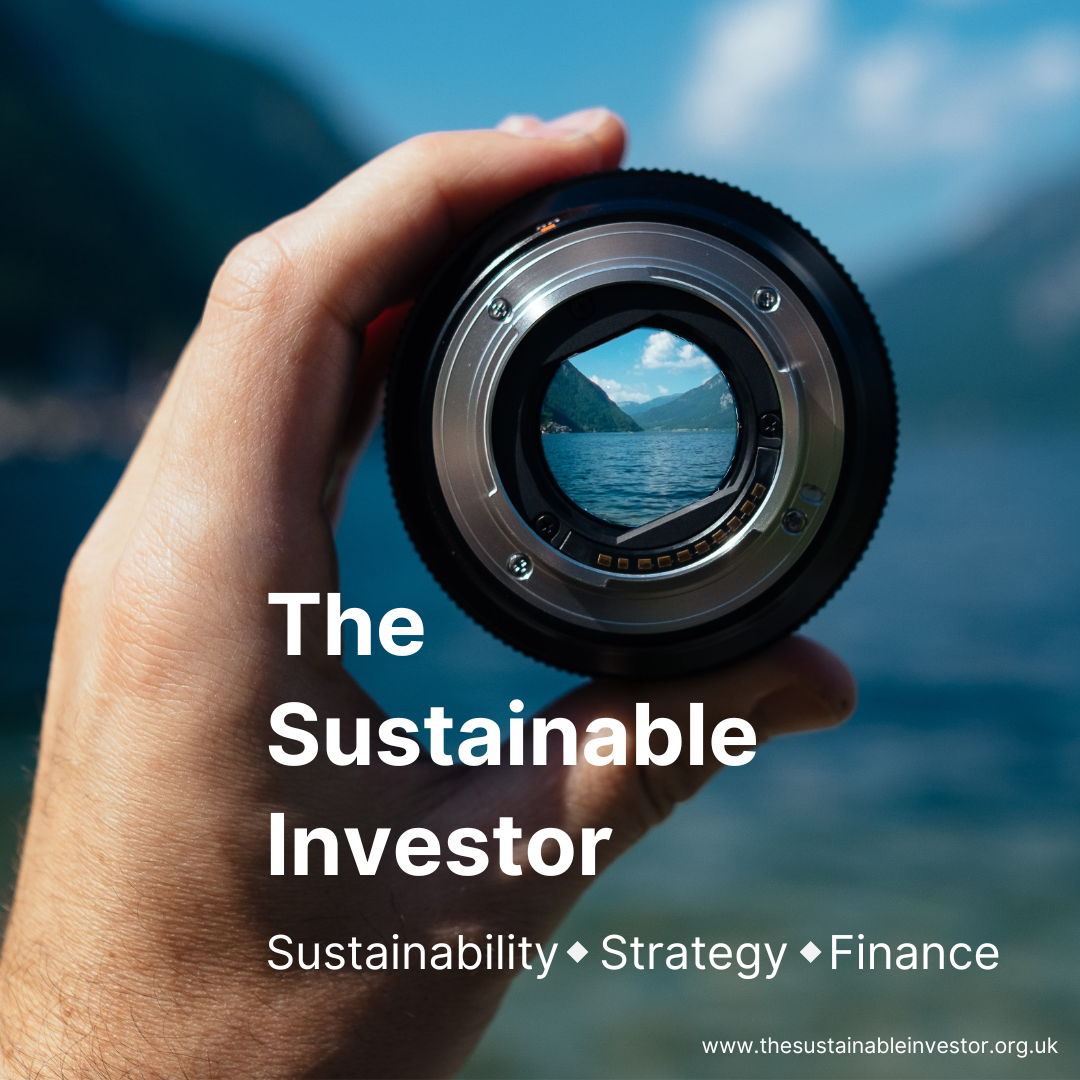
Why relying on the 'diversity tick box' doesn't work
The common view on what Diversity, Equity and Inclusion (DEI) actually are is challenged by excellent research from Edmans, Flammer and Glossner. That's a good thing. It means we can focus on the right actions.
Summary: Amongst the insightful findings from an ECGI working paper from Alex Edmans, Caroline Flammer and Simon Glossner on Diversity, Equity and Inclusion (DEI), the one I found most interesting was that traditional demographic measures of diversity show weak correlation with their own measure of DEI. Their one captures more of a bottoms up sense of the DEI environment in a firm. It demonstrates that increasing actual DEI will take more than just generic initiatives. It is more complex and ultimately about culture.
Why this is important: Unless we understand what constitutes DEI in practice, we cannot really know whether our actions are increasing it or whether it is having a positive impact, both financially and from a social perspective. What constitutes 'good performance' is not as straightforward as people think, particularly when it comes to stock returns.
The big theme: A key facet of sustainability is getting the most constructive impact for society as a whole with the most appropriate resources that we have. That is often people. Those people can have different backgrounds, different ways of thinking and different starting points. With an equitable view point we can create a culture that includes these diverse viewpoints and skills for the benefit of all.

The details
Have we been looking at DEI all wrong?
Embracing diversity with an equitable mindset aimed at creating an inclusive workplace is, from a societal perspective, the right thing to do. It has also been held up as a way of improving performance. Increase board diversity with more female directors, more people of colour or other underrepresented minorities and the benefits are clear - your stock price will go up! Is that true?
Research from Edmans, Flammer and Glossner challenges common perceptions about diversity, equity and inclusion (DEI) with the starting point that traditional demographic measures may not even be capturing the level of DEI in a firm accurately. With that as a starting point, outcomes from current mainstream policy actions may not turn out as intended.
We may well have been looking at DEI all wrong.
We introduced the research in this blog. I would suggest reviewing that (and the working paper) if you haven't done so already. Link 👇🏾

Edmans, Flammer and Glossner's work sought to identify what the determinants are of a workplace environment that promotes and embodies DEI and then look at the consequences of that environment on performance (profitability and innovation), valuation and stock returns.
They found, for example, that there was a positive association between high DEI and all but one of the eight measures of future profitability studied and a positive link to future earnings surprises. However, they found no evidence of a link between DEI in a firm and its stock returns, all else being equal.
But this isn't what I found most interesting...
What did I find most interesting?
There is a strong social argument for increasing DEI. It is simply the right thing to do and is the bedrock of a number of the UN Sustainable Development Goals.
There has been plenty of debate about whether there is a business case or financial imperative. Do companies with more diverse boards or more diverse management teams deliver better performance?
There is an important difference between whether an association, causal or otherwise, exists and whether there is rigorous and compelling evidence for that association. Edmans, in response to the FRC Pre-Consultation on Corporate Governance in February 2018 illustrates this point eloquently. He is a very strong supporter of gender diversity, ethnic diversity and broader measures of diversity (particularly cognitive) and yet argues that the oft cited 'clear evidence' is not really there. He also alludes to the difficulty in some studies in distinguishing 'diversity' from the 'method used to drive diversity' (e.g. quotas).
That leads me to what I found most interesting in their research: their proprietary measure of DEI and its weak correlation with the more traditional measures of demographic diversity - gender, race, age, etc.
Classifications tautologically are measurable but in some cases they only appear to be easy to measure.
Take my mate Iain. Iain is 'white English' according to the UK census. I am 'Asian British/Indian'. We are demographically diverse. However, we have known each other since we were three years old, we have had multiple shared experiences, got into trouble in similar ways and have a similar outlook on life. We are also both follically-challenged up top, but that may not be relevant to this discussion. Iain is very fit, an almost elite runner, triathlete and long-distance swimmer. Currently that is a big area of diversity between us.
My children have multiple ethnic backgrounds and studied in the south of England. What is the dominant influence on how they think and behave?
So there could be a problem in identifying diversity to begin with using traditional methods. From that starting point, it could be that corporates and organisations are then approaching DEI in the wrong way.
Rather than focus on those traditional classifications, Edmans, Flammer and Glossner looked for the outcomes. What are the survey responses that demonstrate the outcome of having an environment of DEI? They produce, in their words, a 'grass-roots' or bottoms-up measure of actual DEI.
I have always felt that an organisation can achieve a large proportion of its diversity objectives at the 'application' stage and not at the 'offer' stage. Encourage a diverse group of applicants to apply and then you can focus on the skill set and aptitude desired for the role or team being hired for. By empowering the broader group to consider an industry or organisation type or role as something they can apply their skills to, a business can improve mobility for the overall group and the quality of the talent pool available to their industry and themselves. Clearly it is not a complete solution and culture building doesn't happen from just one avenue.
But 'diversity' is only one of the components of DEI. Indeed, Edmans's, Flammer's and Glossner's findings that there was a weak correlation between their measure of DEI and demographic measures suggests that, as they put it, an 'add diversity and stir' approach is not really going to improve things.
I found this quote from their paper, particularly powerful:
"Companies can “hit the target, but miss the point” – improve diversity
statistics without improving DEI."
"Diversity, Equity and Inclusion", ECGI Working Paper N 913/2023.
© Alex Edmans, Caroline Flammer and Simon Glossner 2023
Here's an example where a focus on the target can miss the point.
Regulation such as the Nasdaq Board Diversity Rule has led to the imperative for Boards to consider, measure and do something about the diversity on their boards. The Nasdaq rule requires companies listed on the Nasdaq stock exchange to publicly disclose board-level diversity statistics as well as have, or explain why they don't have, at least two 'diverse directors'. In theory this should ultimately lead to increased representation for minority groups at senior leadership levels.
However, a report by Deloitte and the Alliance for Board Diversity in 2021 found that some Fortune 500 company boards were “recycling” board members to fulfil diversity quotas. Over one-third of board members of colour and two out of every five Black members held seats on more than one Fortune 500 board in 2020, according to the research.
Hiring from a limited pool not only reduces opportunities for others to enter board level roles, but it narrows the expertise and diversity of thought that these boards offer.
Finally, it is worth considering that when it comes to groups in the workplace, the type of diversity depends on what the group is designed to do. For example, for an operational team work-style diversity and particularly the balance of those styles is perhaps more important than in a Board room. Cognitive diversity with contrasting viewpoints and challenge may be needed more.
A 2021 report on boardroom diversity highlighted something that is often overlooked when considering diversity on boards:
"The role of the Chair is vital in nurturing new diverse members of the board to participate effectively in board meetings to achieve their full potential and offer constructive challenge."
Conclusion
The common view on what Diversity, Equity and Inclusion (DEI) actually are are challenged by excellent research from Edmans, Flammer and Glossner. That's a good thing. It means we can design workplace policies and approaches to improve DEI in the workplace. 'Add diversity and stir' misses the point that a firm's culture is not the sum of its parts. It is the weighted average of values that people truly follow.
Something a little more bespoke?
Get in touch if there is a particular topic you would like us to write on. Just for you.
Contact us
Please read: important legal stuff.


